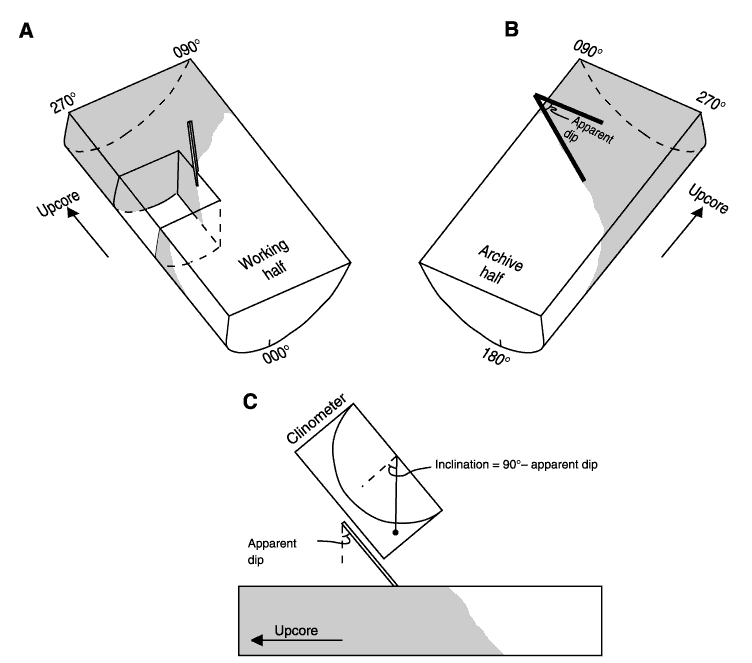Figure F6. Diagram showing the conventions used during Leg 190 for measuring azimuths and dips of structural features in cores and the techniques adopted for measuring structural planes in three dimensions in the core reference frame. The core reference frame conventions for the (A) working and (B) archive half of the core. The E-W (core reference frame) apparent dip of a feature was measured first, generally on the face of the archive half. The data were recorded as an apparent dip toward either 090° or 270°. In this case the apparent dip is toward 270°. A second apparent dip is measured by making a cut parallel to the core axis but perpendicular to the core face in the working half of the core. Note that cuts were normally considerably smaller than the one represented in the diagram. The feature is identified on the new surface and the apparent dip in the north-south direction (core reference frame) marked with a toothpick. The (C) apparent dip is measured with a modified protractor and quoted as a value toward either 000° or 180°. In this case, the apparent dip is toward 000° (into the working half). True strike and dip of the surface in the core reference frame are calculated from the two apparent measurements.

![]()